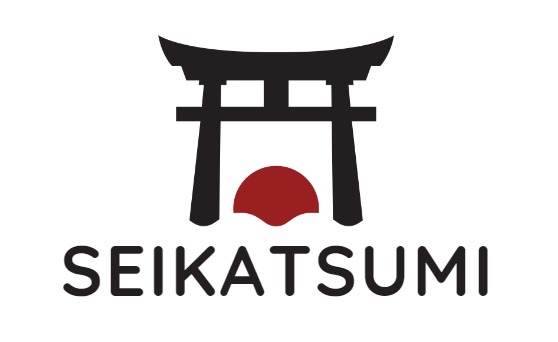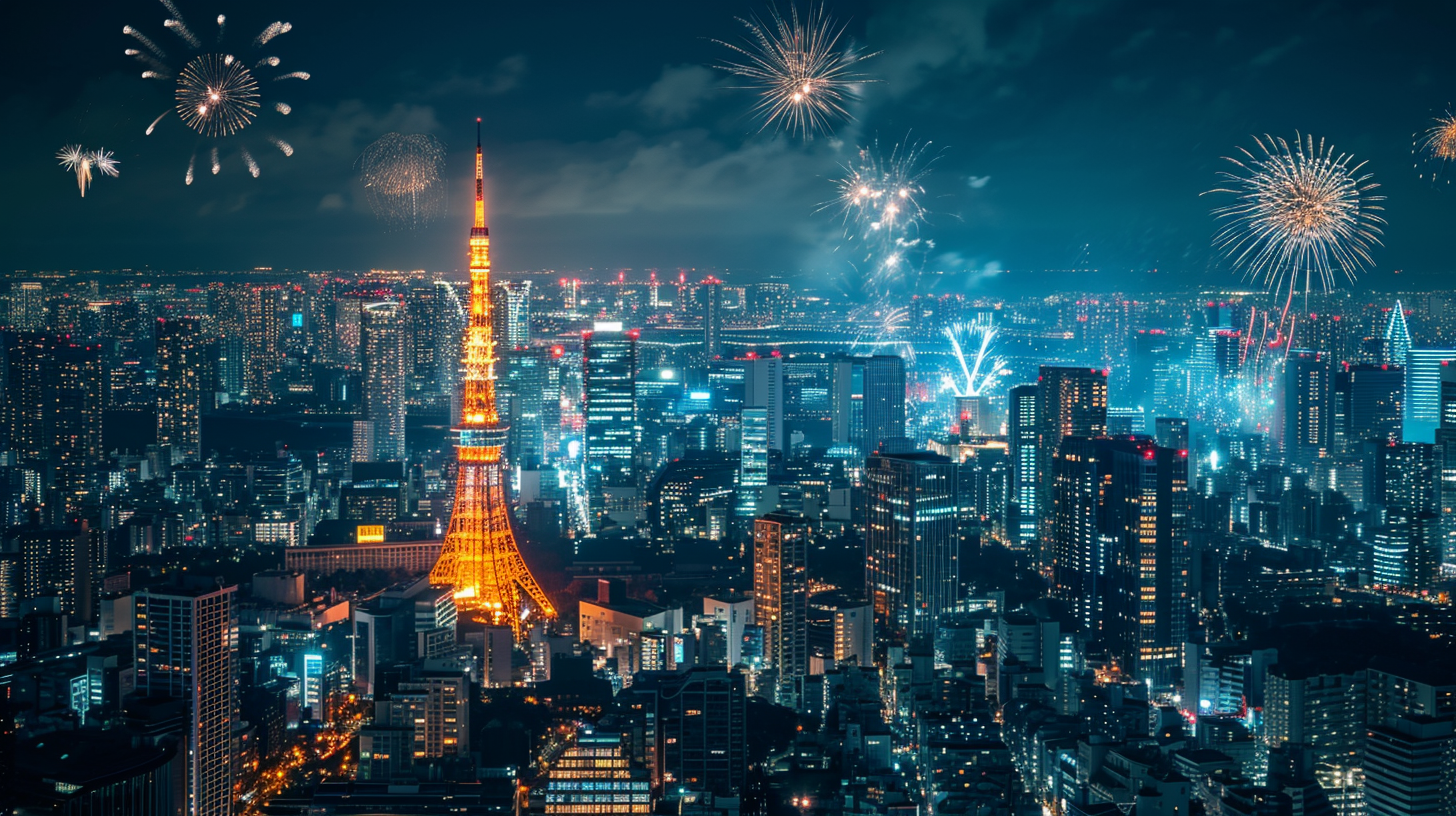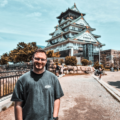As we welcome another year with optimism and joy, immersing ourselves in the beauty of Japanese New Year tradition has a charm like no other. Known as Shogatsu, this period is celebrated with deep cultural significance, symbolizing a fresh start and the hope that the coming year will bring happiness and prosperity. It’s fascinating to see how these traditions blend centuries-old customs with modern celebrations, creating a festive atmosphere that is uniquely Japanese.
Our hearts warm at the thought of households throughout Japan engaging in meticulous preparation for New Year’s. Homes are cleaned thoroughly to welcome the Toshigami, the Shinto gods of the Japanese New Year Tradition, a ritual that breathes life into the Japanese concept of renewal. Engaging in Hatsumode, the first shrine visit of the year, brings us all closer, sharing in the spiritual experience and the collective wish for good fortune.
History of Japanese New Year Tradition
We’ve all grown to love the vibrant and heartwarming traditions that surround the Japanese New Year Tradition. These celebrations are steeped in history, with each ritual and custom offering a glimpse into Japan’s past. Now, let’s journey through the origins and transformations that define this auspicious time of year.
Origins and Evolution
The celebration of the New Year, known as Shōgatsu, has ancient roots in Japan. It originally aligned with the Chinese lunar calendar, but over time, the Japanese have infused the holiday with their own unique practices. The core of this tradition lies in welcoming the deities of the incoming year, drawing a spiritual start to the calendar. Each aspect, from the joyous sound of bell ringing to the meticulous preparation of osechi-ryori, speaks volumes of a culture that holds reverence and gratefulness at the heart of new beginnings.
Meiji Era Changes

With the adoption of the Gregorian calendar during the Meiji Era in 1873, the Japanese New Year Tradition transitioned to January 1st. This shift marked a significant change in how the holiday was observed, reflecting Japan’s increasing Westernization. Government-led reforms during Meiji saw New Year become an opportunity for renewing state loyalties, but over time, the focus returned to its more traditional, family-centric roots, celebrating togetherness and reflection on the year ahead.
Osechi Ryori: The New Year Feast

As we dive into the heart of Japanese New Year tradition, let’s unwrap the layers of Osechi Ryori, a feast that is as much a visual spectacle as it is a culinary journey.
Describing Osechi Ryori and its Historical Significance
Osechi Ryori is not just a meal; it’s a bridge connecting us to Japan’s illustrious past. Historically, these dishes were offerings to gods during the first days of the New Year, ensuring a year blessed with a bountiful harvest, longevity, and prosperity. The tradition dates back over a millennium to the Heian Period, with the Osechi style of cuisine referring to meticulously prepared dishes served in beautiful tiered lacquer boxes called “jubako.”
The Symbolic Meanings of Various Dishes

Each Osechi dish carries a wish for the new year. The black soybean, “Kuromame,” symbolizes health, while the sweet rolled omelet “Datemaki” represents the wish for scholarly success. Shrimp, with their bent backs resembling the elderly, stand for longevity, and “Kazunoko” (herring roe) is eaten to wish for fertility and a prosperous family line. The links between these delicacies and their meanings is a testament to the deep cultural roots of Osechi Ryori, with every bite a whisper of well-wishes.
How Preparation and Presentation Play a Vital Role
In Osechi Ryori, the preparation and presentation are just as critical as the taste. Not only are these dishes prepared days in advance, but their arrangement in the “jubako” is a cherished art form, reflecting the New Year’s spirit. The presentation is not only gorgeous to behold but also tells a story through its order and ornamentation, symbolizing our hopes for the coming year and our reverence for tradition.
Hatsumode: The First Shrine Visit of the Year

As we celebrate the Japanese New Year tradition, there’s an excitement that envelops us when we think about Hatsumode. It’s the special ritual marking our first visit to a shrine or temple, setting a positive course for the year ahead.
Explaining the tradition of Hatsumode
Hatsumode is an integral part of our Japanese New Year tradition. It’s when we visit a shrine or temple for the very first time in the new year, usually between January 1st and 3rd. This visit is a profound expression of respect and a request for good fortune and blessings for the upcoming year. At the shrine, we perform “Sanpai,” which includes throwing a coin into an offering box, two bows, two hand claps, and a final bow.
Key Ritual Components:
- Sanpai: Coin offering, bows, and claps
- Omamori: Purchasing amulets for luck
- Omikuji: Drawing written fortunes
Popular temples and shrines for Hatsumode in Japan

Flocks of people head to well-known shrines and temples across Japan during Hatsumode. The Meiji Shrine in Tokyo claims immense popularity, drawing millions wanting to engage in the tradition. Similarly, the Fushimi Inari-taisha in Kyoto is another iconic destination, renowned for its thousands of torii gates.
Most Visited Sites:
- Meiji Shrine, Tokyo
- Fushimi Inari-taisha, Kyoto
- Naritasan Shinshoji Temple, Narita
Experiences and impressions of people who have participated in Hatsumode
People who have taken part in Hatsumode often talk about a sense of renewal and community. There’s a shared joy and reverence as we make our prayers and wishes for the new year. Visitors mention the blend of solemn tradition and festive atmosphere, with food stalls and colorful decorations enhancing the experience.
Personal Accounts:
- Renewal: Feelings of a fresh start and positivity
- Community: A sense of belonging and shared purpose
Our participation in Hatsumode reaffirms our connection to our cultural heritage and each other, a moment we cherish deeply as we step into the new year.
Hey you! Are you interested in other Japanese traditions that are celebrated? Then you have to take a look at the following article: You definitely can’t miss it!
Traditional Foods

When we think of the Japanese New Year tradition, a tapestry of delicious and symbolic foods immediately comes to mind. Let’s dive into the staples that make this celebration a feast for both the palate and the soul.
Osechi-Ryori
Osechi-Ryori is a collection of colorful dishes, each carrying a deep meaning for the New Year. Packed in special lacquered boxes called jubako, these dishes may include sweet black beans for health, herring roe for fertility, and shrimp for longevity. It’s our way of wishing for a year filled with blessings. Discover the array of dishes in an Osechi feast.
Mochi and the Mochi Matsuri (Mochi Festival) and its traditions

Mochi, a chewy rice cake, plays a starring role in our festivities. During the Mochi Matsuri, families come together to pound rice into mochi, symbolizing the start of a prosperous year. Enjoyed in various forms, such as in a sweet soup called zoni, mochi is our way of savoring tradition and togetherness.
Toshikoshi Soba

Eating Toshikoshi Soba on New Year’s Eve is our cherished ritual to bid farewell to the old year and welcome the new. These buckwheat noodles, embodying longevity and resilience, are a healthy close to the year. Learn about this significant tradition of consuming Toshikoshi Soba.
Customary Activities
We’re about to explore some of the most cherished customs that truly encapsulate the spirit of the Japanese New Year tradition. From the moment dreams float into our sleep to the enjoyment of the year’s first light, these activities are the fabric of celebration in Japan.
First Dream of the Year
Hatsuyume, or the first dream of the year, holds significant meaning in Japanese culture. It is believed that the content of this dream can foretell one’s luck for the upcoming year. Traditionally, certain symbols such as Mt. Fuji, a hawk, and an eggplant are considered especially auspicious if they appear in your Hatsuyume.
First Sunrise Viewing

Hatsuhinode, the practice of observing the first sunrise, is a profound moment of renewal and hope. Many of us gather at vantage points like beaches or mountains with the belief that this first sunrise will bring us good fortune. The beauty of the glowing horizon is a sacred sight, symbolizing the start of a fresh, promising year.
Playing Traditional Games
Engaging in traditional games is a highlight for both children and adults during the New Year. Fukuwarai—akin to Pin the Tail on the Donkey—and Hanetsuki, a game resembling badminton played with wooden paddles called hagoita and shuttlecocks called hane, bring laughter and joy to family gatherings. These games are not just for fun; they also strengthen bonds and celebrate cultural heritage.
Joya no Kane: Ringing in the New Year with Temple Bells

As we immerse ourselves in Japanese New Year Tradition, the captivating echoes of Joya no Kane are essential to experiencing the shift from the old year to the new. These resonant sounds symbolize renewal across Japan.
The Significance of Joya no Kane on New Year’s Eve
Joya no Kane stands as a spiritual cornerstone at the stroke of midnight on December 31st. It’s a time when temples across our nation become beacons of reflection and anticipation. Each bell rings precisely 108 times, a number significant in Buddhism representing the human desires to be cleansed, aligning us for a pure start. The sounds reverberate, touching each of our hearts, as we bid farewell to the previous year’s worries and regrets.
How Ringing Temple Bells Drives Away the Old Year and Welcomes the New
The act of ringing the bell, often open to public participation, allows us to take an active part in the ceremonious farewell of the old year. The vigorous swings of the bell’s log—striking with a resounding gong—send vibrations through the air. It’s believed that each ring dispels the 108 worldly desires we’ve accumulated, ushering in a clean slate for the coming year. This powerful custom connects us all in a shared moment of transition and hopes for Kyoto’s New Year Bell Ringing Ceremony.
Personal Stories of People Who Have Experienced the Ringing
Let’s consider those who have stood in the chilly air, under the cloak of night, with anticipation quivering in their palms. A gentleman once shared his awe at the sheer size of the Daibonsho bell in Chion-in Temple, affirming that its 70-ton presence was as monumental as its sound. A visiting foreigner recounted her emotions, describing the collective final toll: a culmination that crossed cultural barriers and left an indelible sense of unity and peace as they embarked on the journey into January first.
Regional Variations
As we dive into the vibrant tapestry of the Japanese New Year tradition, we find that each region adds its unique thread to the celebration. From local festivities that highlight regional character to unique prefectural customs steeped in history, Japan’s New Year is as diverse as it is fascinating.
Local Festivities

In Tokyo, residents enjoy hatsumode, the first shrine visit of the year, with the bustling Meiji Shrine being a popular spot. The energy here is electric, with thousands sharing in the optimistic spirit of the New Year.
Moving north to Akita, the Namahage Festival is held. Men dress as deities and go door-to-door scaring children into good behavior for the year, a tradition both thrilling and deeply rooted in local folklore.
Unique Prefectural Customs

Each prefecture in Japan has its own spin on welcoming the New Year. For instance, Ehime Prefecture is known for its Toshi Koshi Noodle Challenge, where participants race to finish a bowl of noodles before the year end to invite good luck.
In contrast, Nara Prefecture’s dezomeshiki celebrations, akin to a New Year’s parade, feature elaborate fire fighting displays, honoring the brave work of firefighters and wishing for a year free from disasters.
Modern Celebrations and Entertainment
As we dive into the festive spirit, it’s thrilling to discover how the Japanese New Year tradition unfolds today with vibrant countdown events and captivating January 1st television specials!
Countdown Events

When we talk about December 31st, it’s all about the excitement that builds up as the clock ticks closer to midnight. Cities across Japan come alive with countdown events, often held at iconic spots like Shibuya Crossing or Universal Studios Japan. Imagine us gathering with crowds, the air electric with anticipation, as we count down those final seconds to the New Year amid spectacular fireworks and live performances.
January 1st Television Specials
On New Year’s Day, television takes center stage in our homes. The Kohaku Uta Gassen, a renowned annual music show featuring performances by popular artists, battles it out between teams of male (white team) and female (red team) performers. Besides the Kohaku, other specials include traditional gameshows, comedies, and dramas designed to entertain us from morning till night with laughter and joy as we relax with families and friends.
Influence on Contemporary Culture

We can’t help but get revved up when we talk about how the Japanese New Year tradition has woven its way into the threads of modern culture. It’s fascinating to see such historical practices influencing today’s entertainment and communication.
New Year Terms in Japanese Language
In the realm of language, we see Japanese New Year expressions peppered across everyday conversations during the season. Phrases such as “akemashite omedetō gozaimasu” (Happy New Year) and “otoshidama” (New Year’s gift money) not only keep the tradition current but also connect Japanese people to their cultural roots. It’s a rich lexicon specific to a time of renewal and celebration, bridging the old with the new.
- Expressions of Celebration:
- “Kinga shinnen” (Happy New Year in advance)
- “Kotoshi mo yoroshiku onegai shimasu” (Please be kind to me this year too)
Language plays a pivotal role, preserving the essence of the Japanese New Year and allowing the lore of ancient festivities to continue shaping modern communication.
Frequently Asked Questions
What is the significance of Osechi Ryori in Japanese New Year celebrations?
Osechi Ryori is a special Japanese New Year Tradition feast with symbolic dishes, representing wishes for health, wisdom, and prosperity. It’s meant to be shared with loved ones.
Can tourists and foreigners participate in Hatsumode, the first shrine visit of the year in Japan?
Yes, tourists and foreigners are welcome to join Hatsumode at temples and shrines. Respect local customs when participating.
What is the story behind Kagami Mochi, and how is it used in Japanese households?
Kagami Mochi is a symbolic New Year decoration representing luck. Families display it at home and break it on January 11th to share good fortune.
If you liked this blog post about Japanese New Year Tradition, don’t forget to follow us on Pinterest! Are you also celebrating the new year in japan? what are your plans? Let us know in the comments!



Outstanding post, I conceive blog owners should acquire a lot from this web site its really user friendly.